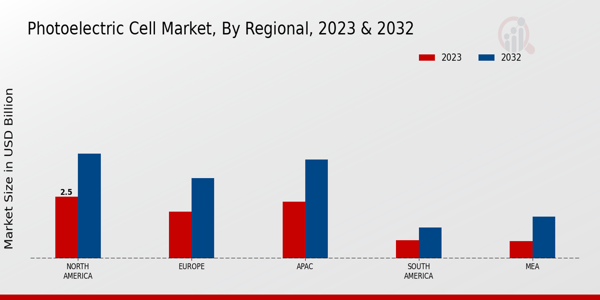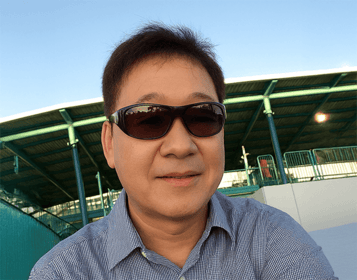Market Growth Projections
The Global Photoelectric Cell Market Industry is projected to experience robust growth over the coming years. With a market size anticipated to reach 2.73 USD Billion in 2024, the industry is on a trajectory of significant expansion. By 2035, the market is expected to soar to 15.9 USD Billion, indicating a strong demand for photoelectric cells across various applications. The compound annual growth rate (CAGR) of 17.36% from 2025 to 2035 further emphasizes the potential for growth in this sector. This upward trend reflects the increasing integration of photoelectric cells in automation, renewable energy, and smart technologies, positioning the industry for a prosperous future.
Growing Demand for Automation
The increasing demand for automation across various industries is a primary driver of the Global Photoelectric Cell Market Industry. Industries such as manufacturing, automotive, and logistics are increasingly adopting automated systems to enhance efficiency and reduce operational costs. Photoelectric cells play a crucial role in these systems by providing reliable sensing and control capabilities. As organizations seek to optimize their processes, the market is projected to reach 2.73 USD Billion in 2024, reflecting the growing reliance on automation technologies. This trend is likely to continue, with the Global Photoelectric Cell Market Industry benefiting from the ongoing shift towards smart manufacturing and Industry 4.0 initiatives.
Rising Adoption of Renewable Energy
The transition towards renewable energy sources is significantly influencing the Global Photoelectric Cell Market Industry. As countries strive to meet sustainability goals, there is a marked increase in the deployment of solar energy systems, which utilize photoelectric cells for energy conversion. Governments worldwide are implementing policies and incentives to promote solar energy adoption, further driving market growth. The Global Photoelectric Cell Market Industry is expected to witness substantial expansion, with projections indicating a market size of 15.9 USD Billion by 2035. This growth is indicative of the increasing reliance on clean energy solutions and the pivotal role of photoelectric cells in harnessing solar power.
Expansion of Smart Cities Initiatives
The expansion of smart cities initiatives is a notable driver of the Global Photoelectric Cell Market Industry. As urban areas evolve, there is a growing need for intelligent infrastructure that incorporates advanced sensing technologies. Photoelectric cells are integral to smart city applications, including traffic management, waste management, and environmental monitoring. The integration of these technologies enhances urban living by improving efficiency and sustainability. As cities worldwide invest in smart infrastructure, the Global Photoelectric Cell Market Industry is poised for growth, reflecting the increasing importance of innovative solutions in urban development.
Increasing Focus on Safety and Security
The growing emphasis on safety and security across various sectors is a significant driver for the Global Photoelectric Cell Market Industry. Photoelectric cells are increasingly utilized in security systems, including intrusion detection and surveillance applications. Their ability to provide accurate and reliable sensing capabilities enhances the effectiveness of security measures in residential, commercial, and industrial settings. As safety concerns continue to rise, the demand for photoelectric cells in security applications is expected to grow. This trend aligns with the broader market growth, as organizations prioritize investments in technologies that enhance safety and security, thereby benefiting the Global Photoelectric Cell Market Industry.
Technological Advancements in Sensing Technologies
Technological advancements in sensing technologies are propelling the Global Photoelectric Cell Market Industry forward. Innovations in sensor design, materials, and integration capabilities are enhancing the performance and versatility of photoelectric cells. These advancements enable more precise detection and control in various applications, ranging from industrial automation to consumer electronics. As industries seek to adopt cutting-edge technologies, the demand for advanced photoelectric cells is expected to rise. This trend is likely to contribute to a compound annual growth rate (CAGR) of 17.36% for the period from 2025 to 2035, underscoring the importance of continuous innovation in the Global Photoelectric Cell Market Industry.
























